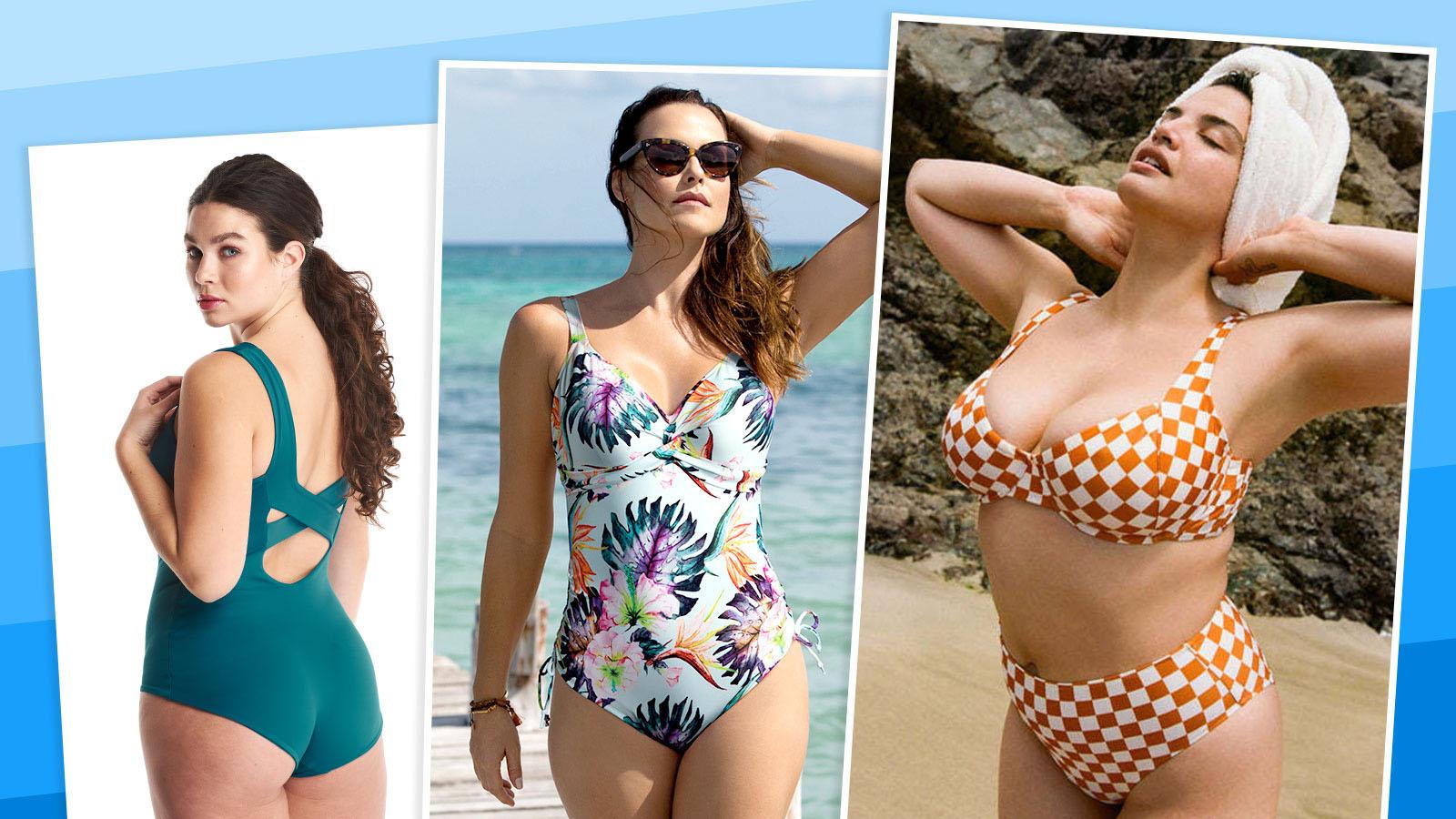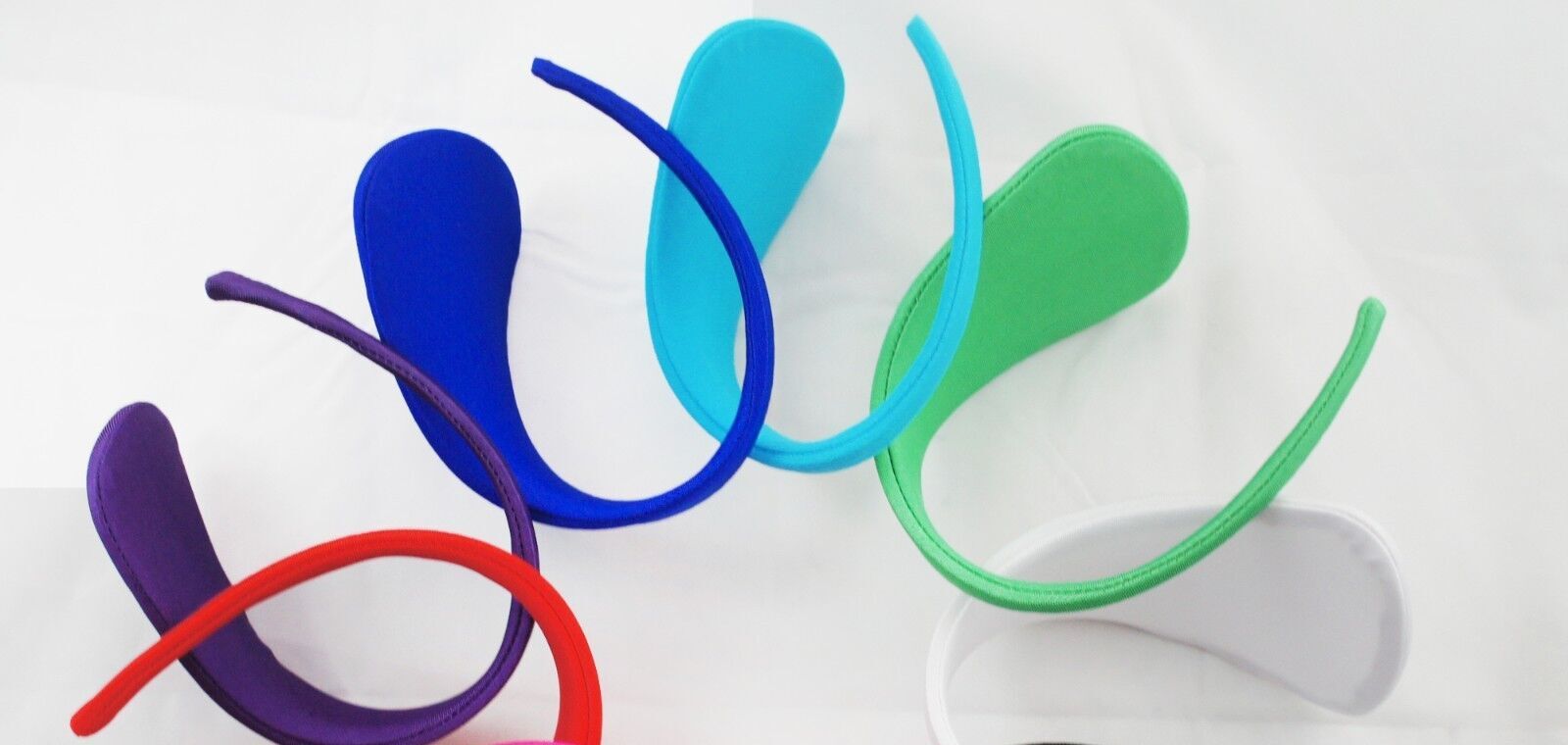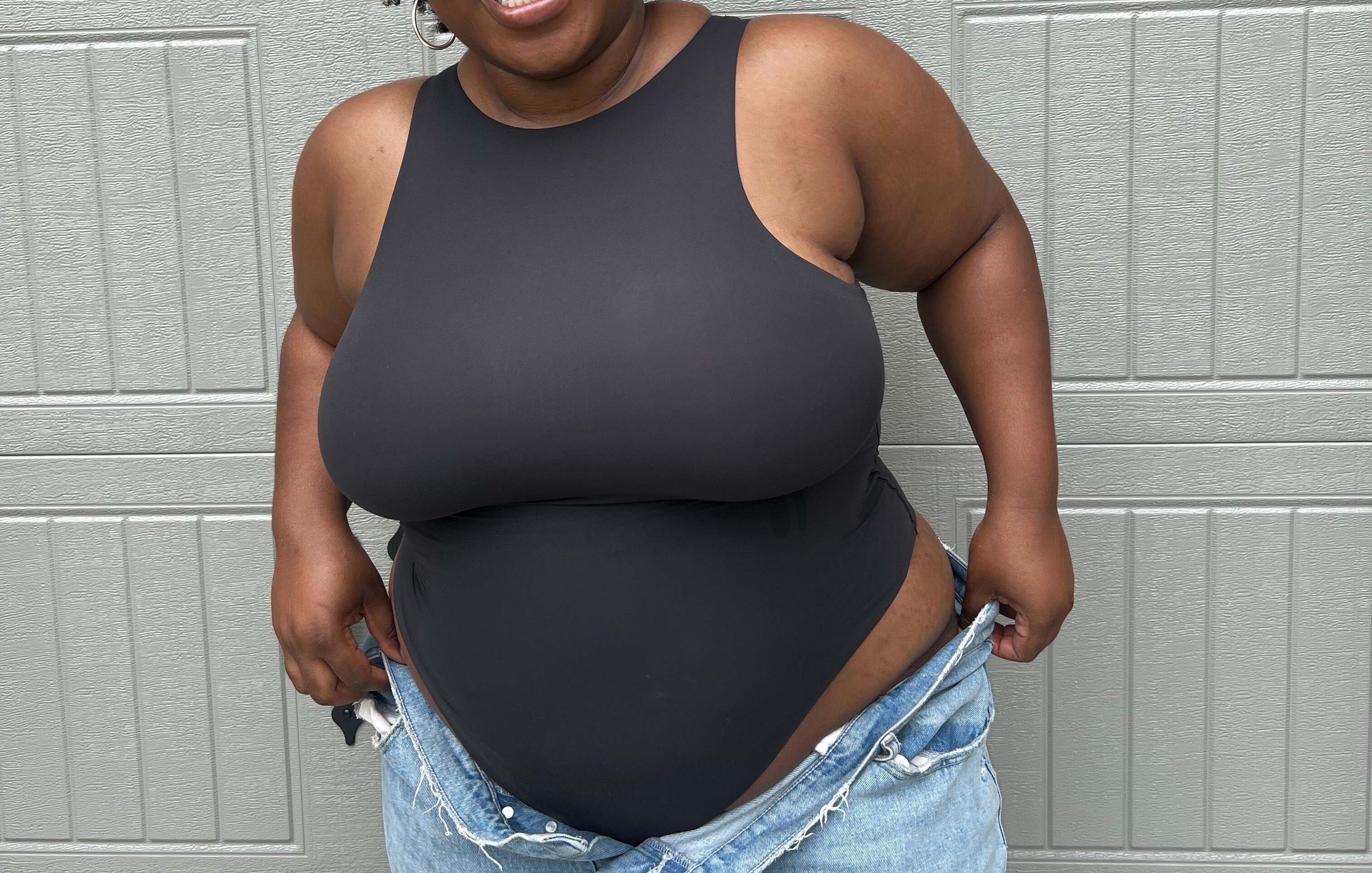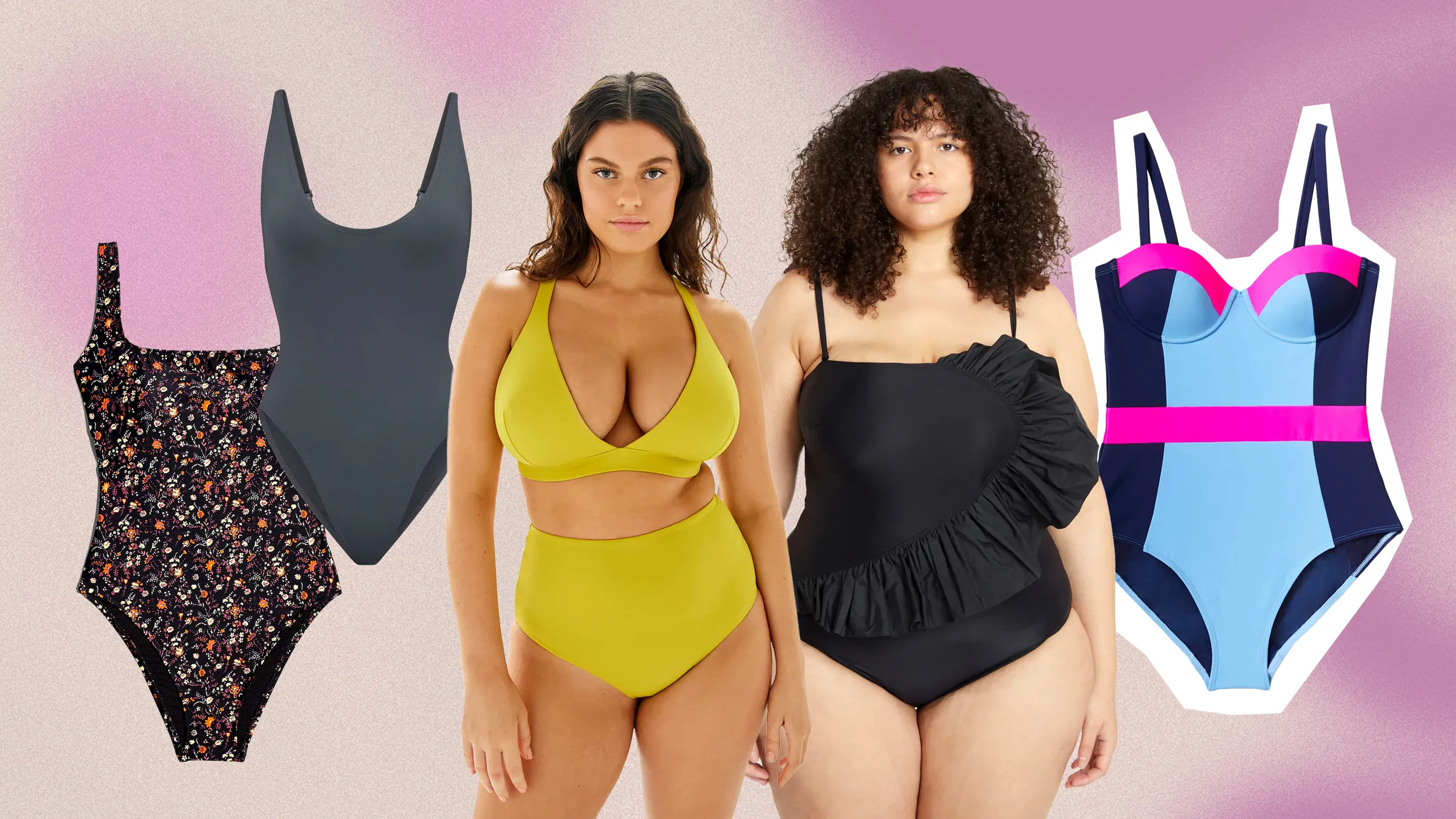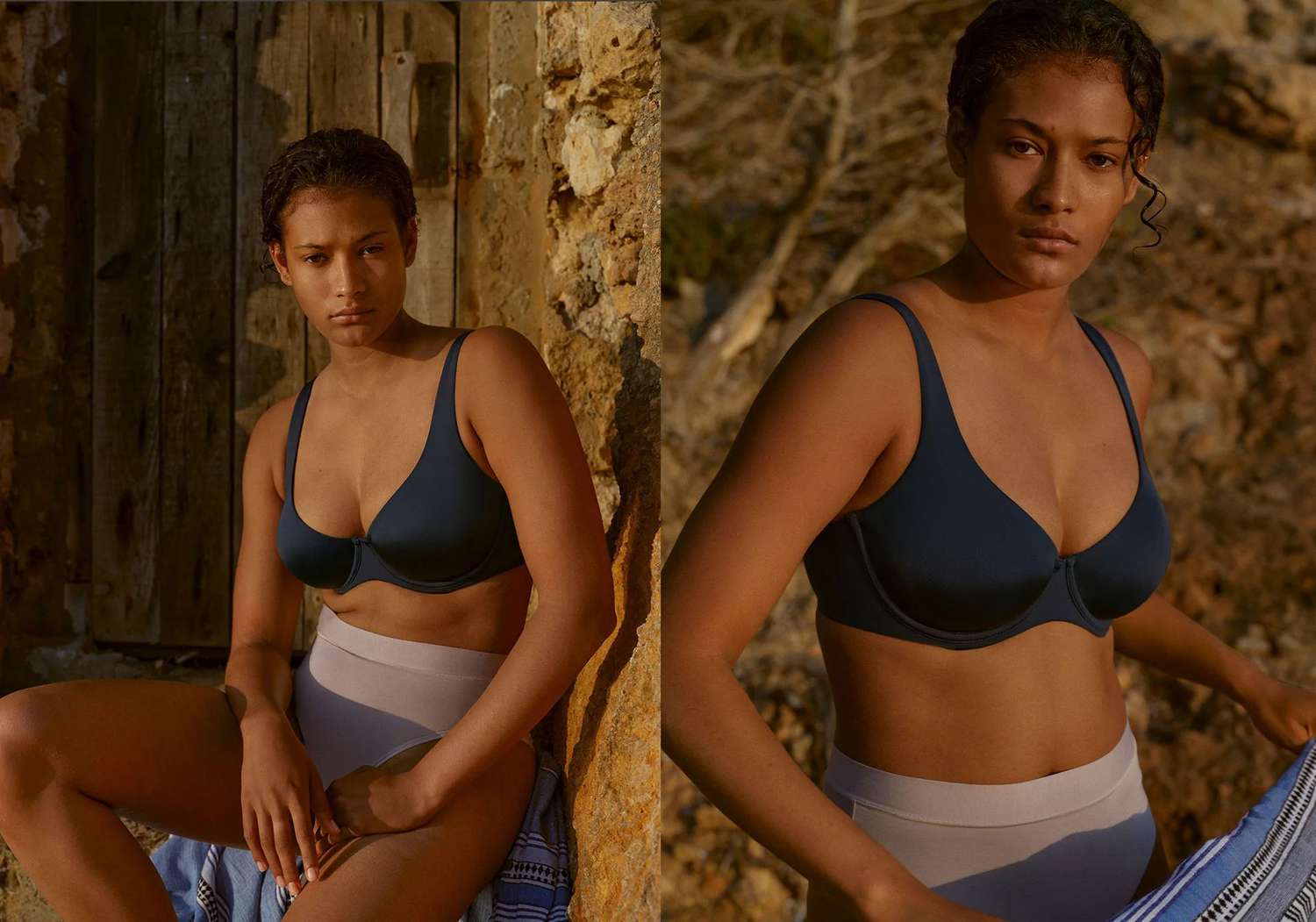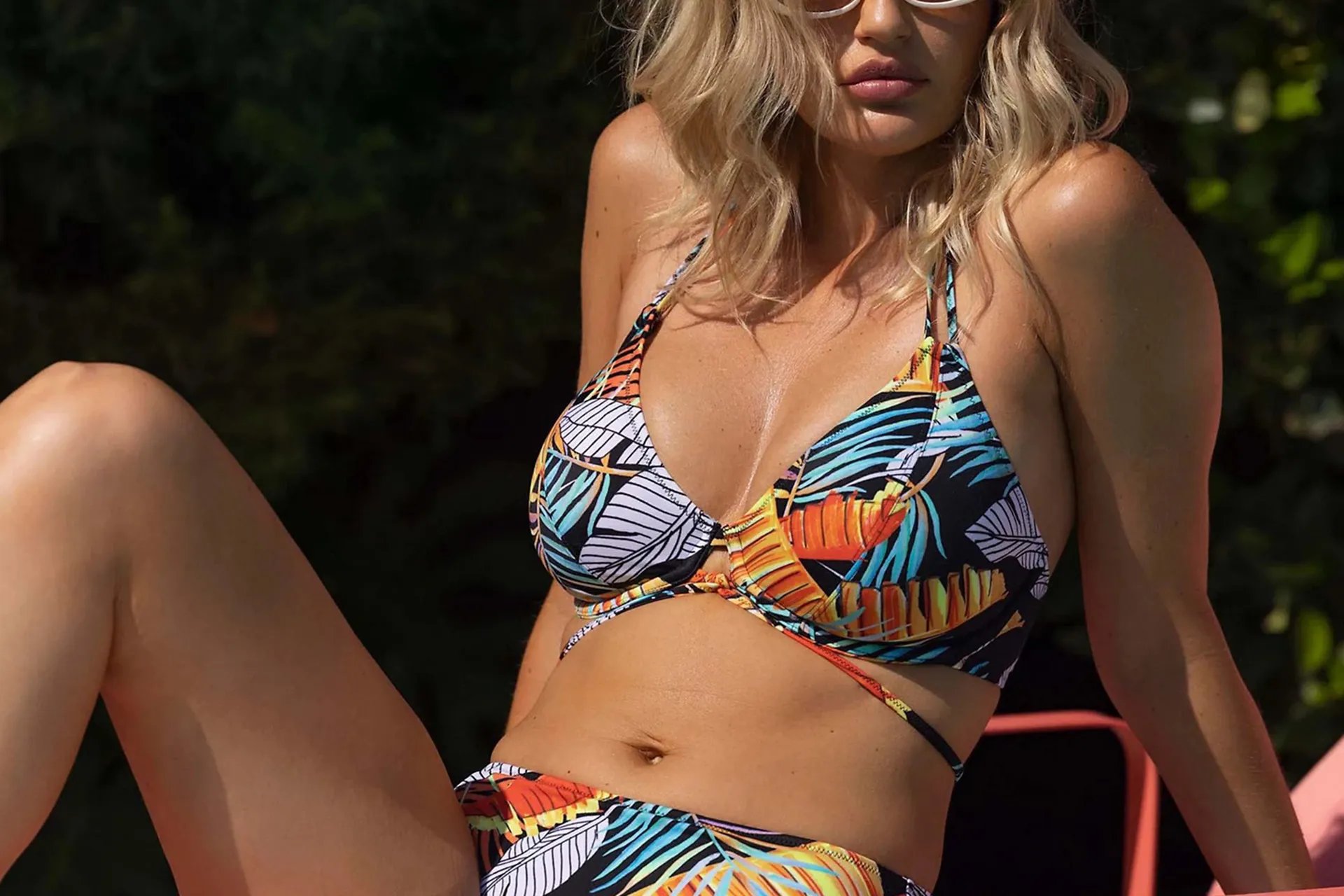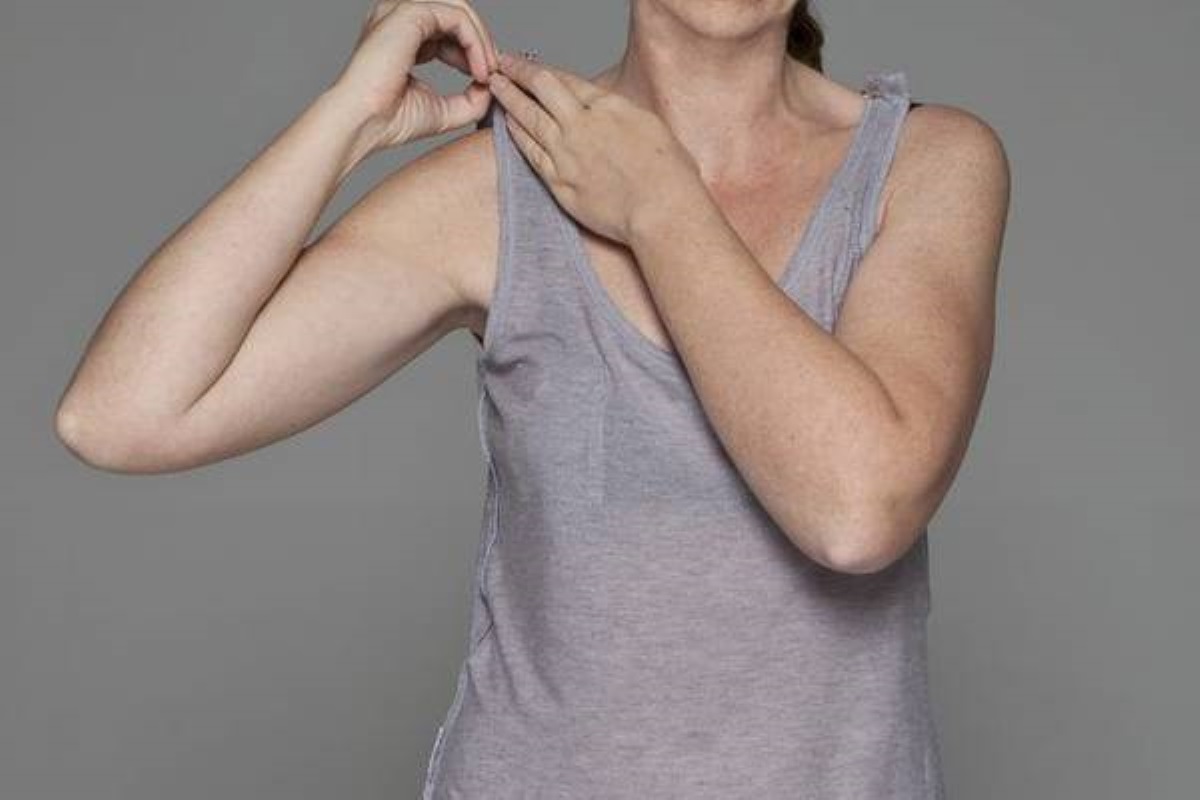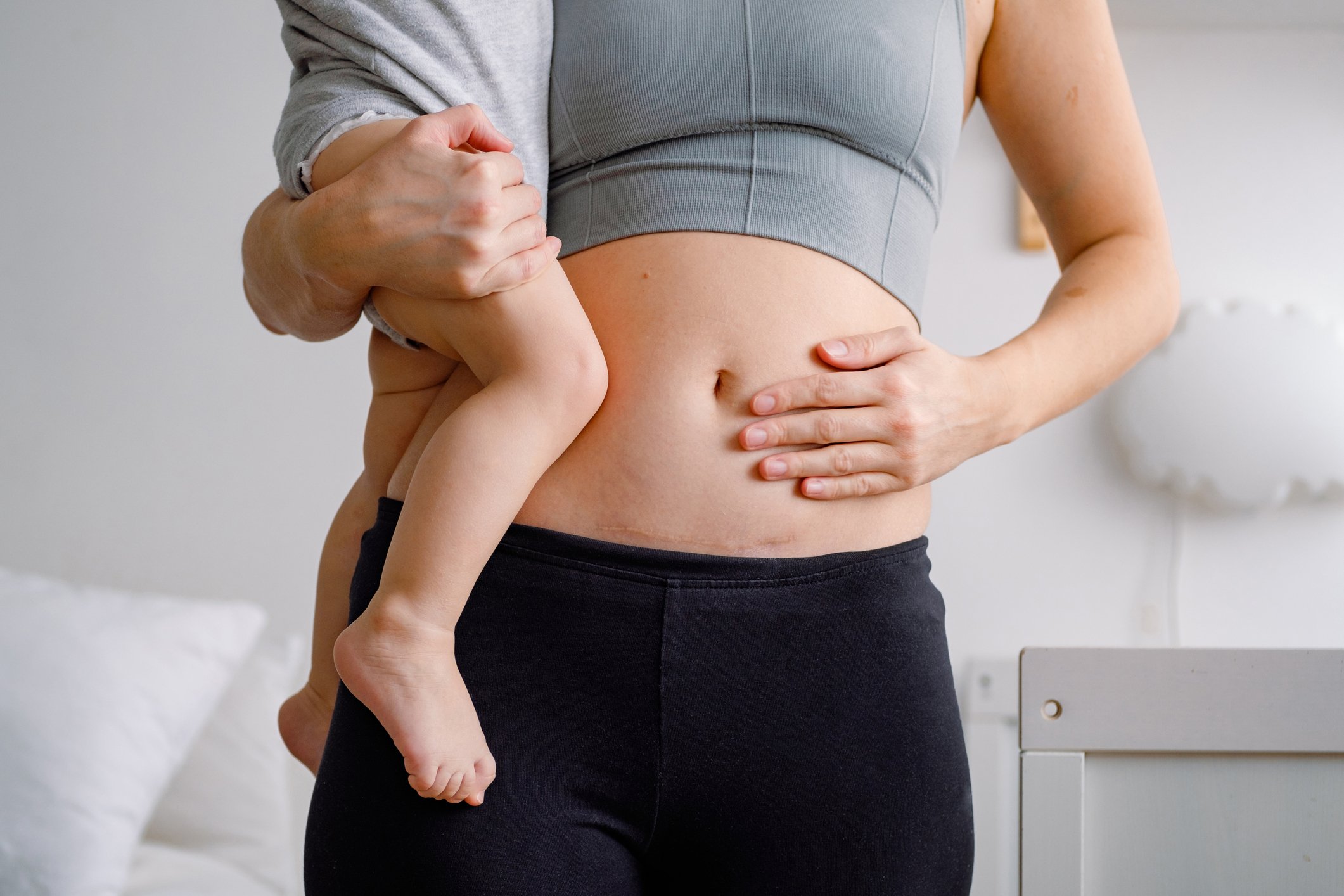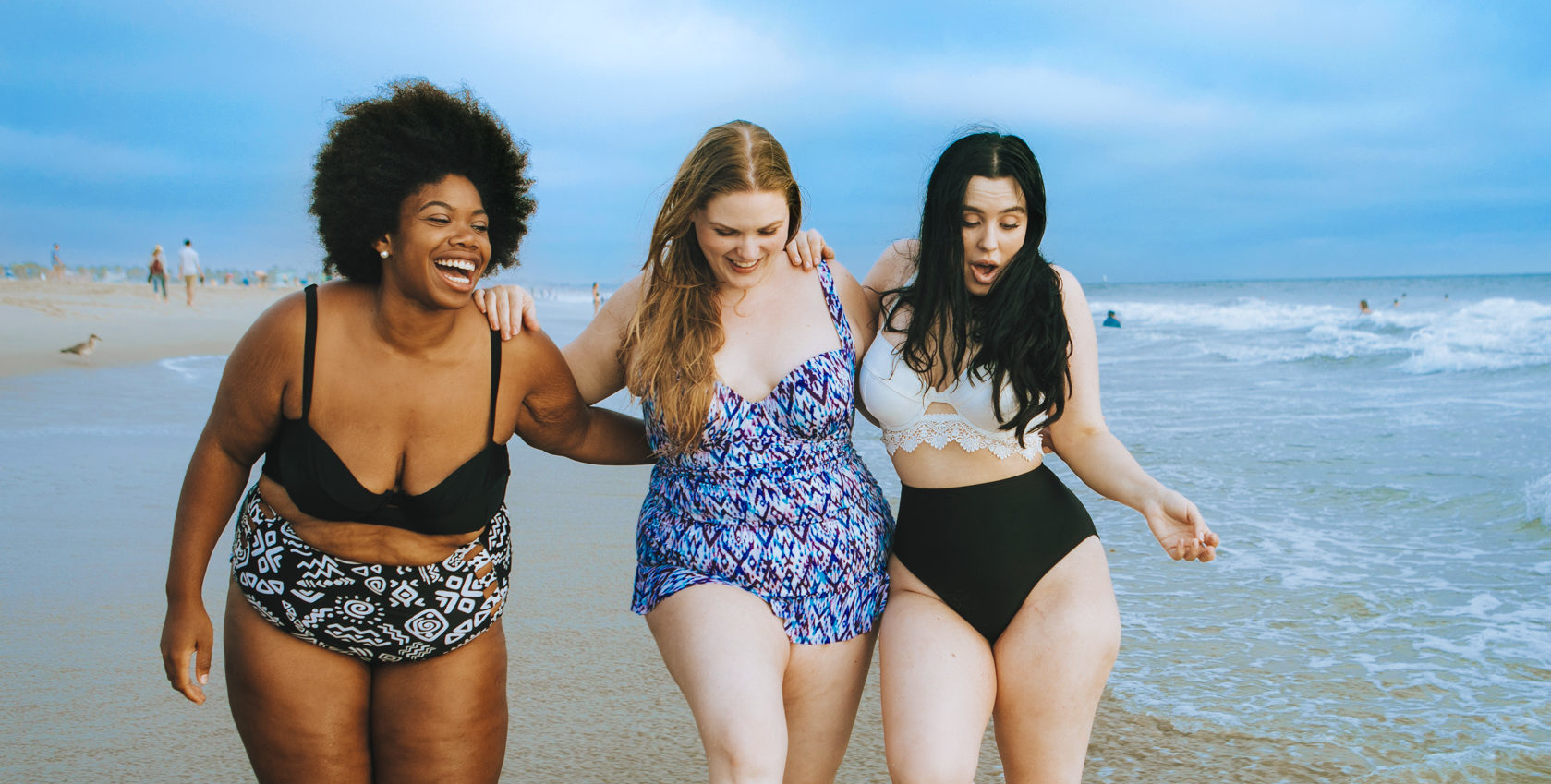Home>Buying Guides>How Big Is A 34C Bra
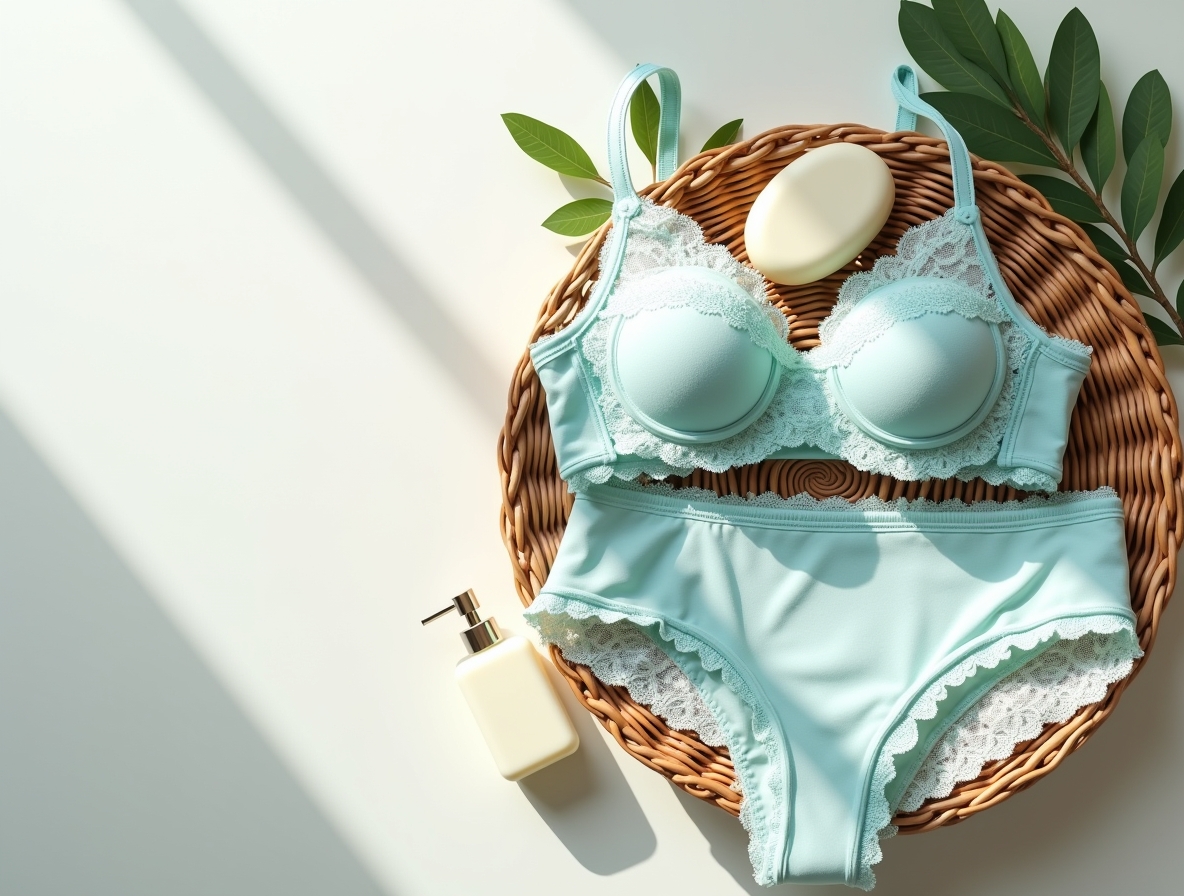

Buying Guides
How Big Is A 34C Bra
Modified: September 23, 2023
Discover how big is a 34C bra for women. Understand the perfect size and fit for your body with our comprehensive guide.
(Many of the links in this article redirect to a specific reviewed product. Your purchase of these products through affiliate links helps to generate commission for Under-tec.com, at no extra cost. Learn more)
Table of Contents
Introduction
When it comes to undergarments, finding the perfect fit is crucial. A well-fitting bra can not only enhance your comfort but also showcase your natural curves. However, navigating the world of bra sizes can be overwhelming. With the abundance of options and measurements to consider, it’s easy to get lost in terminology and confusion.
If you’re a woman who wears a 34C bra or are simply curious about what this size represents, you’ve come to the right place. In this article, we will dive into the world of bra sizes, specifically focusing on the 34C size. We’ll explore its meaning, how bra sizes are calculated, and provide tips on measuring and finding the perfect fit.
Understanding bra sizes is not just about the numbers and letters; it’s about understanding your unique body shape and giving it the support it deserves. So let’s unravel the mystery behind a 34C bra and empower you to make informed decisions when it comes to your lingerie.
Understanding Bra Sizes
Bra sizes consist of a number and a letter, such as 34C. These numbers and letters represent specific measurements that help determine the right fit for your body. However, the sizing system can vary across different brands and countries, which can lead to confusion when shopping for bras.
The number in the bra size represents the band size, which is the measurement around your rib cage just below your breasts. It determines the width of the bra band that provides support and ensures a secure fit. The band size is typically measured in inches or centimeters.
The letter in the bra size represents the cup size, which determines the volume of the breast that the bra can accommodate. Cup sizes range from A to K (or beyond), with each letter representing a specific difference in measurements. A larger cup size indicates a larger volume, while a smaller cup size indicates a smaller volume.
It’s essential to note that bra sizes are not static; they can change over time due to factors such as weight fluctuations, pregnancy, breastfeeding, and natural changes in breast tissue. Regularly remeasuring yourself ensures that you’re wearing the correct size and receiving the support you need.
Now that we have a basic understanding of bra sizes, let’s take a closer look at what exactly a 34C bra means and how it is calculated.
What Does “34C” Mean?
The “34C” bra size is a specific measurement that indicates the band size and cup size of a bra. Let’s break it down:
The number “34” in 34C represents the band size. It signifies the measurement around your rib cage just below your breasts. In this case, the band size is 34 inches (or the equivalent measurement in centimeters). The band size determines the width of the bra band, providing support and anchoring the bra in place.
The letter “C” in 34C represents the cup size. Cup sizes indicate the volume of the breast that the bra can accommodate. In the case of a 34C bra, the cup size is a medium size, not too small nor too large. It means that there is a moderate volume of breast tissue that the bra cup can comfortably support and uplift.
Understanding the combination of band size and cup size is crucial in finding a bra that fits well and offers the right support. However, it’s important to note that bra sizes are not universal, and different brands may have slight variations in their sizing systems. So it’s always wise to try on bras in different brands and styles to find the best fit for your unique body shape.
Now that we know what the “34C” bra size represents, let’s explore how bra sizes are calculated and factors that can affect your bra size.
How Are Bra Sizes Calculated?
Bra sizes are calculated using two key measurements: the underbust measurement and the bust measurement. These measurements provide the foundation for determining the band size and cup size.
The underbust measurement is taken by measuring around your rib cage just below your breasts. This measurement determines the band size, which is typically represented by a number. It’s essential to ensure that the measuring tape is snug but not too tight when taking this measurement.
The bust measurement is taken by measuring around the fullest part of your breasts. This measurement helps determine the cup size, which is typically represented by a letter. Again, it’s crucial to ensure that the measuring tape is not too tight or too loose when taking this measurement.
Once you have these two measurements, you can calculate your bra size. The band size is determined by the underbust measurement, while the cup size is derived by subtracting the underbust measurement from the bust measurement. The difference in inches or centimeters corresponds to a letter in the cup size chart.
It’s important to note that the band size and cup size work together to create a well-fitting bra. If you change your band size, the cup size will also change proportionally to maintain the same volume. For example, if you were wearing a 36B bra, and you decide to go down to a 34 band size, you’ll need to opt for a 34C to maintain the same cup volume.
Keep in mind that these calculations provide a starting point, and it’s always beneficial to try on bras to ensure the perfect fit. Different brands and styles may have slight variations in sizing, so it’s essential to consider your personal preferences and body shape when selecting a bra.
Now that we understand how bra sizes are calculated, let’s explore the factors that can affect your bra size.
Factors That Affect Bra Size
While bra sizes are calculated using standard measurements, there are several factors that can affect your bra size and contribute to variations in fit. It’s important to consider these factors to ensure you’re wearing the right size and getting the support you need. Here are some common factors that can affect your bra size:
Weight Fluctuations: Changes in weight can impact the distribution of fat tissue in your body, including your breasts. If you’ve gained or lost weight, it’s essential to reassess your bra size to accommodate these changes.
Pregnancy and Breastfeeding: During pregnancy and breastfeeding, the breasts undergo significant changes. They may increase in size and become more sensitive. It’s crucial to wear a bra that provides proper support during this time to ensure comfort and prevent any discomfort or complications.
Natural Changes in Breast Tissue: As we age, our breasts naturally change in shape and size due to various factors such as hormonal changes and the loss of elasticity. Regularly checking and adjusting your bra size helps accommodate these changes and ensures a comfortable fit.
Menstrual Cycle: The menstrual cycle can cause temporary changes in breast size and sensitivity due to hormonal fluctuations. Some women may experience breast swelling or tenderness during certain phases of their cycle. It’s important to choose bras that accommodate these changes and provide the necessary support.
Ill-Fitting Bras: Wearing the wrong bra size can have a detrimental impact on your comfort and breast health. Ill-fitting bras can cause discomfort, back pain, and even restrict proper lymphatic drainage. Regularly measuring yourself and finding the right bra size ensures optimal support and comfort.
It’s essential to be aware of these factors and monitor any changes in your body to determine if you need to adjust your bra size. Remember, every woman’s body is unique, and finding the right bra size is all about accommodating your individual shape and needs.
Now that we know the factors that can affect your bra size, let’s move on to the practical aspect of measuring for a bra.
How to Measure for a Bra
Measuring yourself correctly is essential for finding the right bra size. Follow these steps to measure for a bra:
- Get a measuring tape: Use a soft measuring tape, preferably one designed for taking body measurements.
- Measure your band size: Wrap the measuring tape around your rib cage, just below your breasts. Make sure the tape is snug, but not too tight, and parallel to the ground. Take note of the measurement in inches or centimeters. This measurement will determine your band size.
- Measure your bust size: Wrap the measuring tape around the fullest part of your breasts, making sure it’s parallel to the ground and not too tight or too loose. Note down the measurement.
- Calculate your cup size: Subtract your band size measurement from your bust size measurement. The difference will correspond to a letter in the cup size chart. For example, if the difference is 1 inch, it corresponds to an A cup; if it’s 2 inches, it corresponds to a B cup, and so on.
- Combine your band size and cup size: Now that you have your band and cup size measurements, you can determine your bra size. For example, if your band size is 34 inches and your cup size is B, your bra size would be 34B.
Keep in mind that measuring yourself is a starting point, and it’s always recommended to try on different bra styles and brands to find the perfect fit for your unique shape and preferences. If possible, seek assistance from a professional fitter who can guide you through the process and provide personalized recommendations.
Now that we know how to measure for a bra, let’s explore how to find the perfect fit.
Finding the Perfect Fit
Once you have determined your bra size through accurate measurements, the next step is to find the perfect fit. Here are some tips to help you find a bra that fits you perfectly:
- Try on different styles: Bras come in various styles, such as balconette, plunge, push-up, and sports bras. Each style offers different levels of support and shaping. Experiment with different styles to see which ones suit your body shape and provide the desired level of comfort and support.
- Check the band: The band should fit snugly around your rib cage without digging in or feeling too loose. It should be parallel to the ground and not ride up at the back. Adjust the band size if necessary to ensure a comfortable and secure fit.
- Assess the cup size: The cups should fully encapsulate your breasts without any spillage or gaps. The underwire, if present, should encircle the breast without digging into the tissue. If you notice any bulging or gaping, try a different cup size or style to achieve a more flattering and comfortable fit.
- Adjust the straps: The bra straps should be adjusted to a length that provides adequate support and lift without digging into your shoulders. They should stay in place without slipping off or causing discomfort. If needed, tighten or loosen the straps to achieve the desired fit.
- Move and test for comfort: Once you have the bra on, move around, bend, and stretch to see how it feels. The bra should stay in place and provide support without causing any discomfort or irritation. Make sure it doesn’t restrict your movement or rub against your skin.
- Regularly reassess your size: It’s important to keep in mind that bra sizes can change over time due to various factors such as weight fluctuations, pregnancy, and natural changes in breast tissue. Regularly reassess your measurements and try on different sizes to ensure you’re wearing the right bra size for optimal comfort and support.
Finding the perfect fit may require some trial and error, so don’t be discouraged if the first few bras you try don’t work out. Keep experimenting with different styles and sizes until you find the ones that make you feel comfortable, confident, and supported.
Now that we have explored the key steps to finding the perfect fit, let’s bust some common misconceptions about bra sizes.
Common Misconceptions about Bra Sizes
When it comes to bra sizes, there are several common misconceptions that can lead to confusion and frustration. Let’s debunk some of these myths:
- Myth: There is a “normal” or “ideal” bra size: The idea of a “normal” or “ideal” bra size is a misconception. Every woman’s body is unique, and there is a diverse range of bra sizes that are considered normal. The key is finding a size that fits well and provides the necessary support for your body shape.
- Myth: Cup sizes are always the same: Cup sizes can vary across different band sizes. For example, the cup volume of a 34B bra is different from a 36B bra. Cup sizes are relative to the band size, so a larger band size will have a larger cup size to maintain the same volume.
- Myth: You can determine your bra size just by looking at it: It’s not always possible to accurately determine a bra size just by looking at it. Different brands have variations in their sizing systems, and factors like fabric stretch and design can impact the fit. It’s best to rely on measurements and try on different sizes and styles to find the perfect fit.
- Myth: A smaller band size is always better: While it’s important to wear a properly fitting band that provides support, going too small can be uncomfortable and restrict circulation. It’s crucial to find a balance between a snug band that stays in place and one that allows for easy movement and breathability.
- Myth: Once you find your size, it never changes: Bra sizes can change due to various factors like weight fluctuations, pregnancy, and natural changes in breast tissue. It’s essential to regularly measure yourself and reassess your size to ensure you’re wearing the most supportive and comfortable bra.
By debunking these common misconceptions, we can embrace the diversity of bra sizes and focus on finding a well-fitting bra that suits our unique bodies.
Now that we have dispelled these myths, let’s explore the different bra styles that are suitable for a 34C size.
Different Bra Styles for 34C
As a woman with a 34C bra size, you have a wide range of bra styles to choose from that will complement your shape and provide the desired level of support. Here are a few popular and flattering bra styles for a 34C size:
- T-shirt Bra: T-shirt bras are smooth and seamless, making them ideal for wearing under fitted tops and T-shirts. They provide a rounded shape and moderate coverage, giving you a sleek and natural look.
- Balconette Bra: Balconette bras are characterized by a lower-cut neckline and wide-set straps, creating a lifted and enhanced appearance. They are perfect for wearing with low-cut or square-neck tops, giving a boost to your cleavage while maintaining a natural shape.
- Push-up Bra: For a little extra oomph and cleavage, a push-up bra is a great option. These bras have padding or built-in push-up cups that lift and push the breasts closer together, creating a fuller and more enhanced look.
- Wireless Bra: If you prefer a bra without underwire, a wireless bra offers comfort and support. They use gentle fabrics and design structures to provide uplift and shape without the use of wires, making them perfect for everyday wear.
- Sports Bra: For active women, a sports bra is essential. Look for sports bras with moisture-wicking fabric and adjustable straps for maximum comfort and support during workouts and physical activities.
These are just a few options available for the 34C size. Remember, personal preference and comfort play a significant role in choosing the right bra style. Experiment with different styles to find the ones that make you feel confident, supported, and comfortable throughout the day.
Now that we have explored the different bra styles for a 34C size, let’s wrap up our discussion.
Conclusion
Understanding bra sizes and finding the perfect fit can significantly enhance your comfort, confidence, and overall well-being. In this article, we have explored the concept of bra sizes, specifically focusing on the 34C size. We have debunked common misconceptions, discussed how bra sizes are calculated, and provided tips for measuring and finding the right fit.
Remember, bra sizes are not one-size-fits-all, and they can change over time due to various factors like weight fluctuations and natural changes in breast tissue. Regularly reassessing your size and trying on different styles and brands ensures that you are wearing a bra that provides optimal support and comfort for your unique body shape.
As a woman with a 34C bra size, you have a plethora of bra styles to choose from, including t-shirt bras, balconette bras, push-up bras, wireless bras, and sports bras. Experiment with different styles to find the ones that make you feel confident, supported, and comfortable.
It’s important to remember that finding the perfect bra is a journey. Don’t be discouraged if it takes some trial and error to find your ideal fit. The most important thing is to listen to your body, be open to trying new styles and sizes, and prioritize your comfort above all else.
With a solid understanding of bra sizes and the knowledge of how to measure and find the perfect fit, you can confidently navigate the world of lingerie and embrace your unique shape and size.
